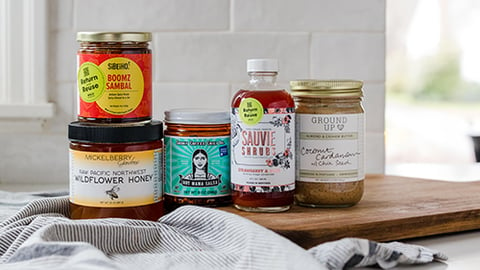The Rise of Supermarket Prepared Foods
In recent years, the resilience of nearly every industry has been tested by increasing inflation and reduced consumer buying power. Despite being community necessities, supermarkets and grocers are no exception to this evolving landscape.
In the face of these challenges, grocers have demonstrated tremendous ability to adapt and innovate to find new growth avenues. Operating within the constraints of tight profit margins, often at 1%-3%, grocers are no longer content with the status quo; they are actively seeking and implementing new strategies to overcome these challenges. A new approach is needed.
[Read more: "Food and Beverage Poised for More Promising 2024: Report"]
Prime Time in the Perimeter
In an age of rising consumer costs and hectic lifestyles, grocers are working to find ways to deliver distinct forms of convenience based on their core strengths. The reality is that many Americans simply don’t have time to prepare meals the way they did years ago. In fact, 64% say that prep time is the most significant barrier to cooking a nutritious meal.
While many consumers have turned to restaurants that offer takeout and delivery and even fast-food chains for quick meal options, the perimeter of the grocery store – fresh and prepared foods – is becoming an increasingly attractive (and more affordable) alternative. The data reveals that prepared foods have exploded in growth in recent years. According to one Marketforce survey, more than 70% of consumers say that they’ve bought prepared food over a 90-day span, and half of that group say that they purchased prepared foods one to five times in that time. Even for those consumers who may want to make their own meals more often, 50% say that they mix homemade meals with semi- and fully prepared items.
The good news is that since the pandemic, many grocers have started to capitalize on the true possibilities of prepared foods.
The Re-Emerging 'Grocerant'
Whether it's national chains, regional grocers or smaller single-owner markets, prepared foods have witnessed a surge in sales and are competing more closely than ever with restaurants as a new form of takeout. A majority of shoppers (55%) say they want easier shopping in the grab-and-go section, and prepared foods are filling that need.
Grocery stores are not only serving as the grab-and-go option for households, but many are also taking advantage of their kitchens to compete with restaurants on delivery apps such as DoorDash and Caviar. The term “grocerant” – a grocery store that serves meals just as a restaurant would – is not just a trendy phrase, but also now a legitimate reality in big cities, rural areas and everywhere in between.
The Need for the Right Packaging
While the potential for prepared foods is clear, how to deliver it with the right packaging is much less so. The market for takeout and on-the-go is fiercely competitive, and staying ahead means offering more than just delicious foods.
The wrong food packaging can ruin the customer experience and result in the loss of future sales. Selecting proper packaging is key to ensuring food is protected, but it can also elevate visual appeal. Grocers should factor in the type of food being served and temperature requirements. How a customer may consume the meal is equally important when choosing packaging, whether the food is heated in the container, transferred to a plate, microwaved from a chilled or frozen state, or stored in the refrigerator for an extended period.
[Read more: "SPECIAL REPORT: The Latest Food Packaging Innovations"]
Grocers should build a portfolio of packaging options for hot foods versus cold foods, and liquids versus solids. Some options, including material, color, structure, size and shape, further enhance the dining experience and make sure it remains appealing, from the grocery aisle to the kitchen table.
Packing Sustainability Into Prepared Foods
Of course, beyond fitness for use, food packaging for prepared foods today must also consider sustainability and the importance more consumers place on it as part of their purchasing decision. More than 88% of Americans say that managing food waste is important, and 55% say that they’re “extremely or very concerned about the environmental impact of product packaging.” No longer can sustainability be an afterthought.
Thankfully, there are more sustainable choices than ever when it comes to prepared food packaging – from paper products made with recycled content and compostable pulp products to plastic options that can be recycled, it’s a delicate balance between maintaining fitness for use while meeting sustainability goals, but the best food packaging providers will have a wide selection to choose from and can help grocers navigate those decisions during the buying process.
Developing a Prepared Food Portfolio
Packaging matters greatly whether a grocer is just getting into the prepared food game or looking to enhance sales with a more robust program. It’s becoming a necessity to work with a packaging provider that can tailor a portfolio that fits your offering and can help you meet the demand for prepared foods.






